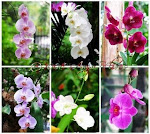 Dendrobium Sulawesiense
Dendrobium Sulawesiense Newly discovered species from Sulawesi (Indonesia), Dendrobium sulawesiense (syn. Den. Crepidiferum) is quite striking orchids with large flowers in magenta and orange tongue and durable. Tolerant of moderate to warm temperatures, this species requires high kelembababan and light levels are.
Dendrobium is one of the orchid genus epiphytes commonly used as an ornamental plant or garden space. The flowers are very varied and beautiful. Dendrobium is relatively easy to maintain and flowering.
Dendrobium orchid growth pattern of type simpodial, it means to have limited the growth of the rod tip. This stems continue to grow and will stop after reaching the maximum limit. This growth will be continued by the new saplings growing in the side. In orchids have connecting simpodial called rhizoma or underground stems. From the rhizoma is going out of new seedling shoots. Among the rhizoma and leaves some kind of tuber called Pseudobulb (tubers false). Size and shape vary Pseudobulb.
Dendrobium orchids need sunlight with moderate to high, depending on the type of Dendrobium. If the temperature is too high can be assisted by the use of spray fog to avoid greater evaporation.
Dendrobium plant is not difficult, just provide a good planting medium. It could be charcoal, broken tiles, coconut fibers, and ferns. In order to grow well, instead of planting medium once every six months.
In addition to a good planting medium, note also the nutrients that must be provided. Without the right nutrients, dendrobium not be able to grow and bloom well. To be always flowering, provide regular NPK fertilizer. For fertilizing, do it as needed. Nutrition will help its growth.
Like most species of orchids, dendrobium can grow well at temperatures 15-28 degrees Celsius. Required humidity is 60% -85%. To get the right humidity, do watering two times a day, morning and evening.
Observe also about placement. Place dendrobium in the shade, away from direct sunlight. If you need to plug paranet on plant location. To avoid ticks, or caterpillars, spray insecticide, one to two times a month.

